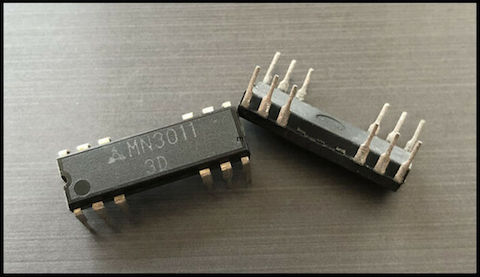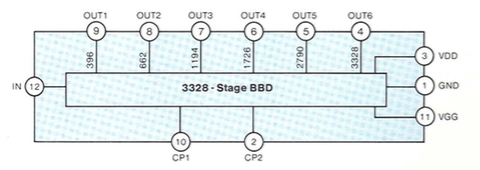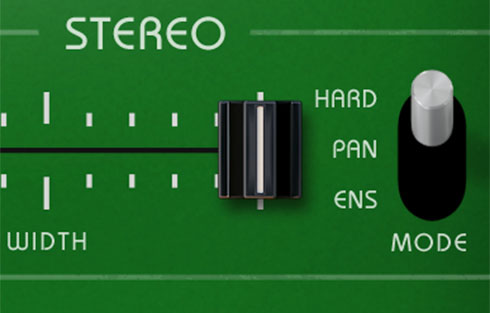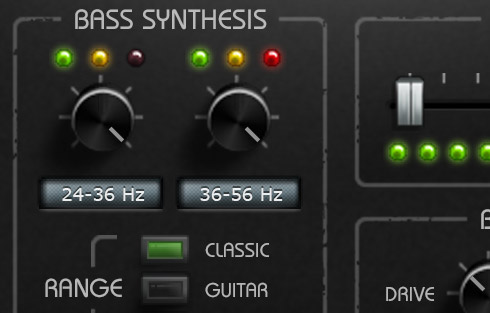- What bucket brigade chip does Cheeseverb emulate, and why is it special?
The Cheeseverb emulates an analog reverb circuit built around the Panasonic MN3011 bucket brigade (BBD) chip.

Most bucket brigade chips have a single output. An analog signal level is captured at the input, and at each clock step, that voltage is moved one "bucket" down the line of internal capacitors. After enough clock steps have passed, that voltage appears again at the output.
The MN3011, uniquely, features six outputs. These tap into the delay line at specially-spaced enharmonic intervals, so that no delay time is a multiple of any of the others. This keeps the multiple delay signals from "piling up" at any particular interval. Or, as the MN3011 datasheet puts it:
6 stages not in multiple proportion with each other so that a proper mixing of the six differently delayed output signals generates a highly effective reverberation.
To the best of our knowledge, the Cheeseverb is the first studio-quality reverb effect built around the MN3011 BBD chip. The ADA STD-1 stereo delay used it, but with a maximum delay time of 55ms it was limited to the “short and metallic” end of the reverb spectrum, and was generally better suited to flanging, slapback echo, and chorusing applications. In contrast, the Cheeseverb’s maximum delay time goes to 3x that delay length, allowing for a much more spacious reverb effect.




